History of Kom Ombu – Egypt
The Kom Ombo Temple is one of Aswan’s and Egypt’s most remarkable structures. Because “Kom” means “Hill” in Arabic and “ombo” signifies gold in hieroglyphics, Kom Ombo means “The Hill Of Gold.” It was built during the Greco-Roman period, from 205 to 180 BC, during King Ptolemy V’s reign, with minor extensions later during the Roman reign. It is 45 kilometers north of Aswan, on the east bank of the Nile River.
The crocodile deity Sobek, patron of fertility, is worshipped in the southern half of the temple, while Horus the Elder (Haroeris), the protector of the Pharaohs and Egypt, is worshipped in the northern half. It was also constructed to establish the ptolemies’ sovereignty and dominance over the entire kingdom.
Components of Kom Ombu
Kom Ombo temple is unique in that it was built with two matching sections next to each other, each of which is independent of the other for the purpose of worship. Like most temples in Ancient Egypt, the temple was erected in the shape of a rectangle out of limestone.
With two twin sanctuaries and two parallel corridors going to the temple’s outside, the temple’s design is almost exactly symmetrical. It has a front courtyard, a hypostyle hall, three inner halls, several antechambers for offerings, minor rooms for various rituals and functions, and two large sanctuaries for Horus and Sobek.
Ptolemy VIII and XII bowing in front of the Nile deities are among the many magnificent images and decorations on the temple’s walls and columns. As a symbol of their power, the Ptolemaic dynasty worked to improve the temple over time.
KOM OMBO – THE TEMPLE OF SOBEK
Another Greco-Roman temple worth seeing on your way to or from Aswan is located 48 kilometers south of Edfu. Kom Ombo is even worse off, with no roofs left. However, the temple’s open-air setting complements the sunny riverfront location.
Kom Ombo is a special temple since it is dedicated to two gods. Sobek and Horus, the crocodile-headed gods, were the most important gods worshipped here. Horus the Elder, or Haroeris.
To make things even more complicated, two triads were worshipped here, rather than just two deities. Sobek is worshipped alongside Hathor and Khonsu, a lunar deity adored alongside Amun and Mut in Thebes.
Haroeris, on the other hand, is grouped with obscure deities Tasenetnofret and Panebtawy, who are only attested at Kom Ombo. Kom Ombo had two main sanctuaries, one next to the other, due to its dualistic character. And aisles connected them all the way to the courtyard beyond. While the original layout is no longer discernible, the temple is nonetheless enjoyable to see. As previously said, the roof is completely missing. However, a birth chapel, a Hathor chapel, and numerous intact flowered columns of the Hypostyle Hall may still be seen.
There are also numerous well-preserved reliefs throughout the walls. They largely show the king presenting offerings to Sobek and Horus. The majority of them depict the pharaoh making offerings to Sobek and Horus. But who was Sobek, and what did he represent? Sobek was an ancient Egyptian god who was mostly revered in Aswan and the Fayoum Oasis.
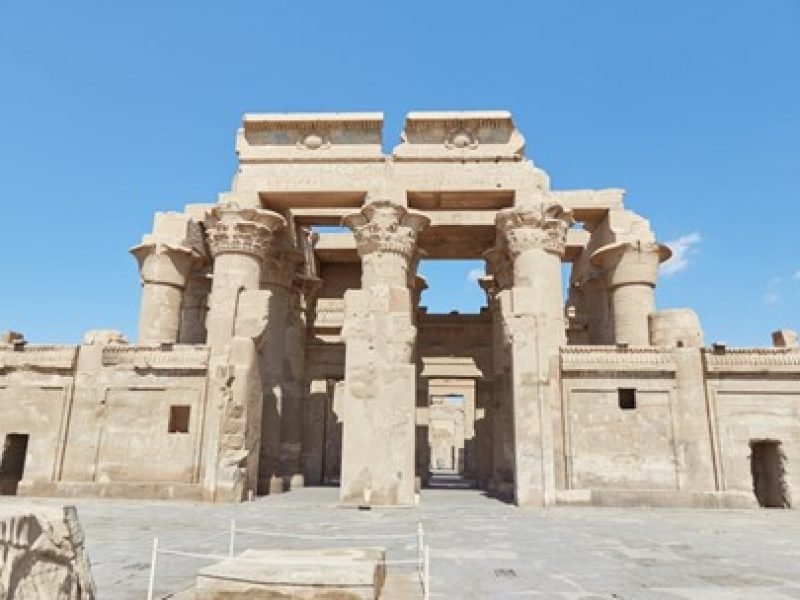
Book your deal now at www.kaytrips.com for Kom Ombu and Edfu Temple – Egypt
Crocodiles were both feared and respected in ancient Egypt, and many people were killed by them every year. People kept (and still retain) the critters as pets in places like Aswan. The majority of them depict the pharaoh making offerings to Sobek and Horus. The inner sanctuaries of the shrine have been entirely demolished as you approach the main shrine area. Only the granite altars’ ruins remain. However, a relief immediately behind the damaged sanctuaries is one of Kom Ombo’s great attractions.
A relief portraying Roman Emperor Trajan kneeling before Imhotep and two goddesses can be found here. Yes, this is the same Imhotep who planned the Djoser Step Pyramid, which was built almost 2,000 years before Kom Ombo!
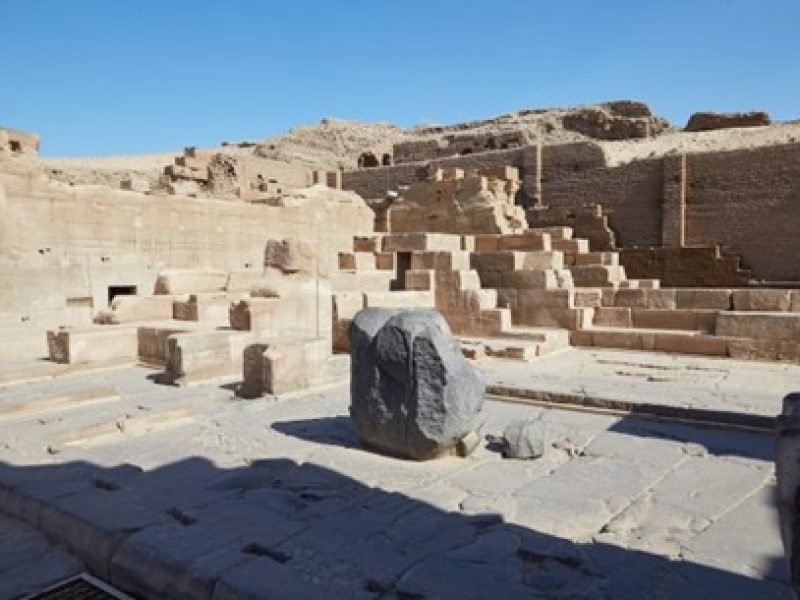
Imhotep was one of ancient Egypt’s first non-royal mortals to be deified. And he was especially well-liked during the Greco-Roman era, when the architect/priest/doctor was revered as a curing god. Imhotep’s duty as a healer is reflected in the offerings behind the goddesses, which appear to be medical implements. Scholars investigating Egyptian medicinal techniques have been drawn to this carving. Some of the artifacts look to be surgical instruments, but others say that they are not medical in nature.
Outside the temple, on the Nile side, is a large well that was originally home to sacred crocodiles. Given that one can still visit a coffee shop in Aswan’s Nubian Village that has a live crocodile, it’s not hard to image the beasts roaming around here in ancient times! Before you leave, stop by the Crocodile Museum, which is located just adjacent to the temple. It’s a small yet well-organized museum dedicated solely to Sobek worship.

Book your deal now at www.kaytrips.com for Kom Ombu and Edfu Temple – Egypt
It not only has Sobek-related objects from the Middle Kingdom, New Kingdom, and Ptolemaic periods on exhibit, but it also has a number of mummified crocodiles!
Only cellphone photography is permitted, and entry is included with the temple ticket.
EDFU – THE TEMPLE OF HORUS
Edfu, located midway between Luxor and Aswan, is undoubtedly Egypt’s best-preserved temple. With the exception of the lack of color, there is no need to use your imagination to imagine how this old edifice once looked.
Edfu Temple was built in 237 BC during the Ptolemaic era. It was completed a couple of centuries later, in 57 BC, just before the Romans conquered Egypt. As a result, this is one of the few temples in Egypt that the Ptolemies started and finished.
However, like with other Greco-Roman Egyptian temples, a much older temple once stood on the site, with sections of the enclosure wall dating back to the Old Kingdom.
The Horus Temple faces south. Most Egyptian temples, on the other hand, face either east or west. The Temple of Hathor in Dendera, on the other hand, faces north. Horus, the realized divine principle, was mythologically associated with Hathor, the cosmic mother. Every Egyptian New Year, a ceremonial procession took place between them.

Book your deal now at www.kaytrips.com for Kom Ombu and Edfu Temple – Egypt
Horus
Horus was one of the most important gods in ancient Egypt, worshipped from the Predynastic period to the Roman era. He is frequently represented as a man with a falcon head, or as a falcon alone.
Horus was the son of Osiris and Isis, and he was born in the marshes after his father, Osiris, was killed by Set.
Horus would later go on to avenge his father and destroy Set in an 80-year conflict. There are several myths about Horus and Set’s battle, one of which depicts Set as a hippo.
Isis intervenes and aids her son in the tale, shooting harpoons at Set. But she eventually feels sorry for him and tends to his wounds. Horus is enraged and cuts off his mother’s head, however, she is eventually resurrected by the gods.
After that, they conduct a boat race with stone boats. Horus’s boat, however, was a disguised timber watercraft. Horus assumes the throne after Set’s boat sinks, ending decades of conflict.
Horus denotes resurrection and the return to the source symbolically. The falcon, which carries its prayer toward the sun, is an ideal emblem for this.
Horus is known by many names, including Re-Horakhty (Horus on the Horizon), Haroeris (Horus the Elder), Horus Behdety (Horus the Avenger), Horsiesis (Horus son of Isis), and Harpocrates (Horus the Elder) (Horus the Child). Horus Behdety is honored at Edfu Temple, and many of the reliefs depict fights between Horus and Set.
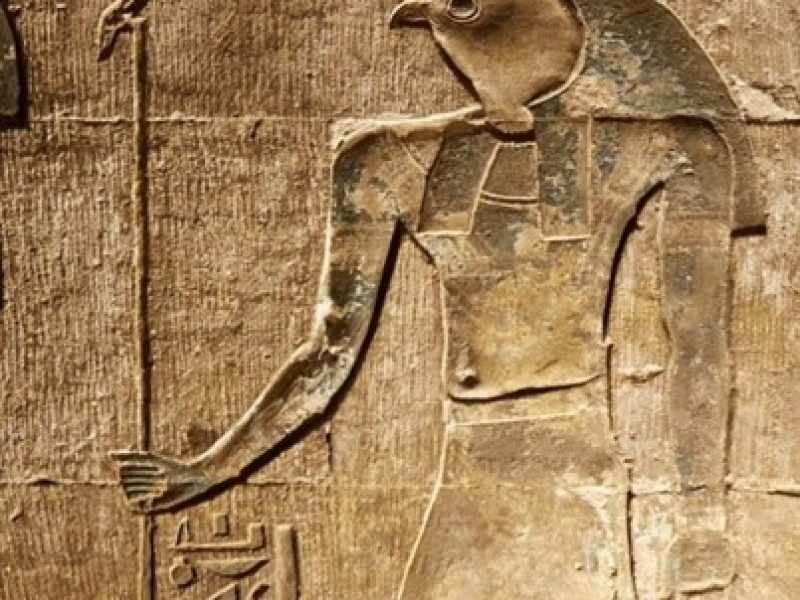
Book your deal now at www.kaytrips.com for Kom Ombu and Edfu Temple – Egypt
Entering The Temple
When you get at the temple grounds, you’ll observe that the mudbrick enclosure wall is nearly complete. These walls were built to symbolically divide the sacred from the profane.
Egyptian enclosure walls were always made of mudbrick, in contrast to the stone temple constructions.
A mammisi, or birth chapel, is located outside the front gate. From the Late Period forward, these constructions were prevalent at temples, and they were devoted to the king’s divine birth.
Edfu’s exterior pylon has miraculously survived practically undamaged. The split of unity into duality was symbolized by these gates (i.e., creation). They also represented th e rising sun, and so the afterlife.
The traditional smiting scenes are shown on this pylon, symbolizing the triumph of light over darkness. Uniquely, two enormous granite statues of Horus in falcon form stand by the doorway. But, as you’ll discover momentarily, the courtyard has an even more remarkable pair.
The Courtyard
Egypt’s only complete front courtyard. It is surrounded by 32 Ptolemaic-style flower columns. The king is depicted making offerings to the gods in the reliefs on the walls. There would have been a sacrificial altar in the middle of the court.
The stone Horus figures near the doorway, however, are the true centerpieces here. Horus is depicted with both the Upper and Lower Egyptian crowns. Horus ruled Egypt not only in popular mythology, but also in real king lists!
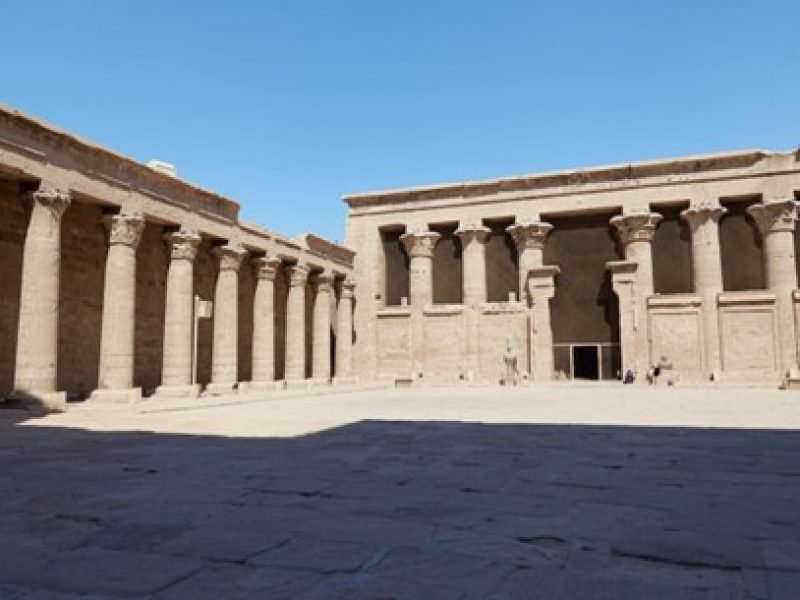
Book your deal now at www.kaytrips.com for Kom Ombu and Edfu Temple – Egypt
Exploring the Interior
Between the falcons is a doorway that leads to a vestibule with a dozen flowery columns. The ceiling here, like that of Dendera’s Hypostyle Hall, contains astronomical and astrological information.
However, due to years of residents occupying the place and lighting fires inside, it has been entirely blackened. Edfu’s ceiling, unlike Dendera’s, has yet to be redone.
The reliefs on the walls are mostly ceremonial again. However, two small chapels can be found along the wall closest to the entryway. The one to the east was a library that housed a large number of sacred texts. While the writings have long since vanished, a list of books has been carved into the wall.
Surprisingly, Neoplatonic philosophers developed a list of sacred Egyptian books that they were aware of roughly five centuries later. Despite not having seen this inscription before, it aligned closely.
A Hypostyle Hall with twelve columns leads from the entryway. It’s full of well-crafted reliefs, most of which are ceremonial in nature. Horus, Isis, and Hathor all make multiple appearances if you look closely.
The main sanctuary, the most important component of the temple, is reached via two antechambers. Edfu is the only temple in Egypt where you can see a shrine and a solar barque within the sanctuary!
All other sanctuaries in Egypt are essentially deserted, with the exception of the Temple of Ptah at Karnak.
You could only look in from the outside because archaeologists were surveying the room at the time. But the polished syenite (a type of granite) shrine built by Nectanebo II (360 – 342 BC), Egypt’s last native ruler, was still visible.
Meanwhile, religious processions featured the solar barque prominently. In ancient times, it was most likely transported all the way to Dendera. And there are countless pictures of guys carrying this exact barque on the wall art throughout Edfu.
The primary figure of Horus, which was most likely constructed of gold, is now missing from the sanctuary. During religious processions, it would have been put in the polished shrine and later on the solar barque.
The main sanctuary, like Dendera, is encircled on all sides by countless minor sanctuaries. Similarly to Dendera, the Temple of Horus has staircases on both sides leading to the roof.
The Nut (sky goddess) kiosk bears another resemblance to Dendera’s Temple of Hathor. It’s virtually in the same spot at Edfu, to the right of the central sanctuary.
The structure has its own small open-air courtyard, and the goddess’s outstretched figure is shown on the ceiling.
The Surrounding Reliefs
Before departing, go outdoors and wander through the corridors. Unique reliefs span the entire small space between the shrines and the inner enclosure wall.
On either side of the vestibule’s exterior wall are popular netting sceneries, which were initially seen in non-royal tombs during the Old Kingdom.
Instead of a nobleman who has died netting some birds, the pharaoh is aided by Khnum, Thoth, and Horus. Furthermore, this net holds not just birds, but also foreign detainees!
Meanwhile, the western corridor is totally covered in reliefs illustrating the renowned Horus tale. Like a comic book, the plot unfolds along the wall. The majority of the scenes are combat situations. If you look closely, you may see Horus fighting Set as a hippo, crocodile, and oryx. Isis can be seen assisting her son in a number of instances.
You’re reminded of hippo hunting scenes in far older tombs when you look at these scenarios. While there will be no images of gods in these tomb scenes, they had a deep symbolic value that would have reminded the deceased of old myths.The fights reflect the metaphysical struggle between spirit (Horus) and matter (Set). A staircase on the right side of the temple leads to a Nilometer.

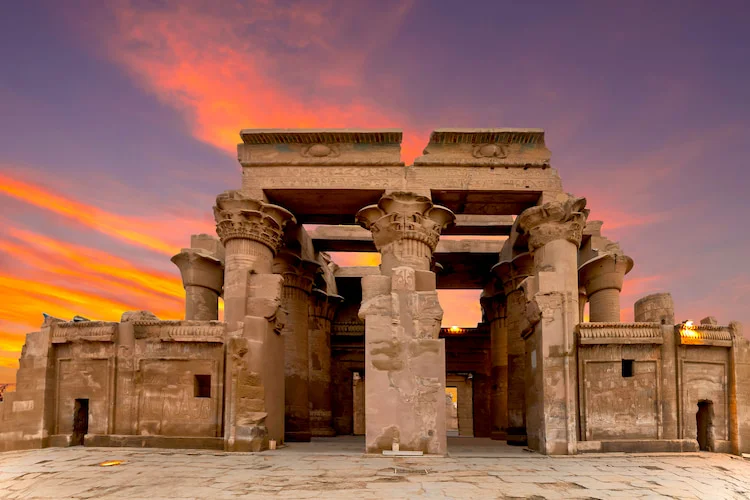
Comment (0)